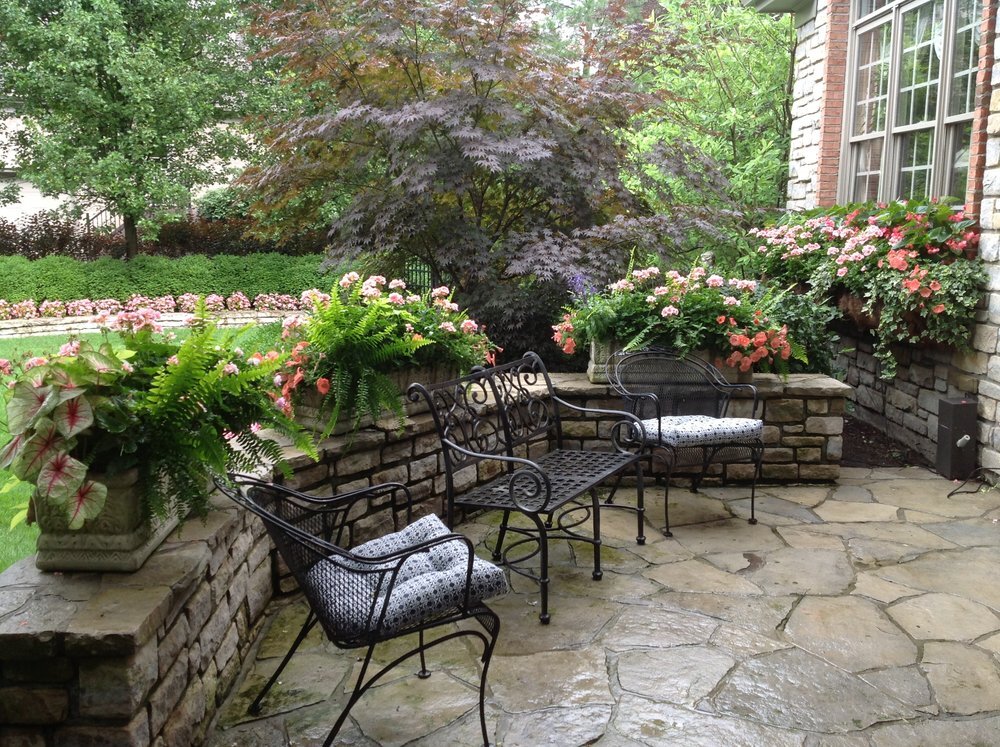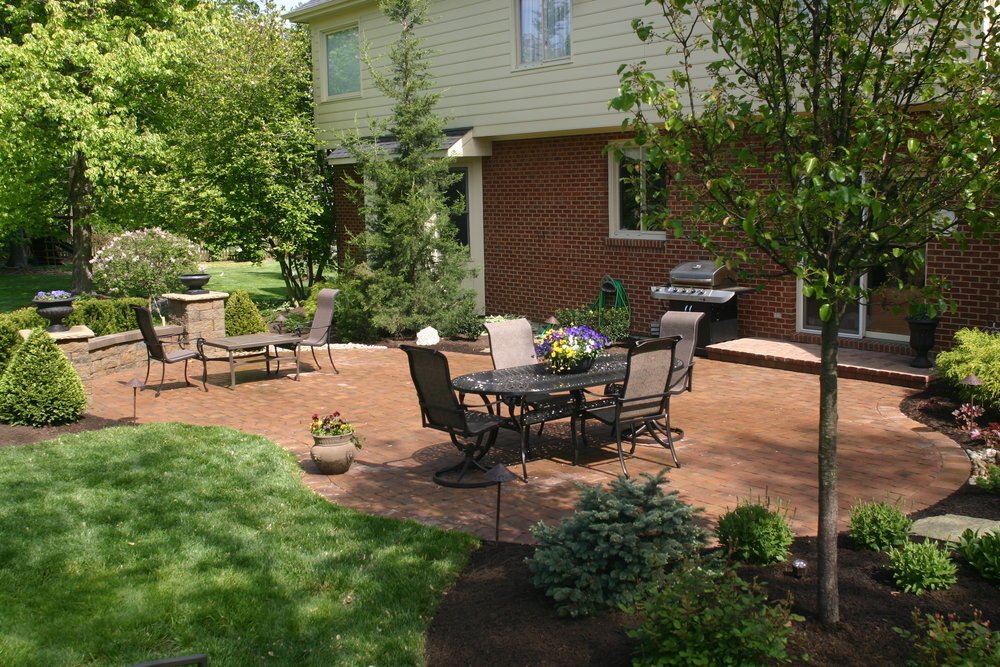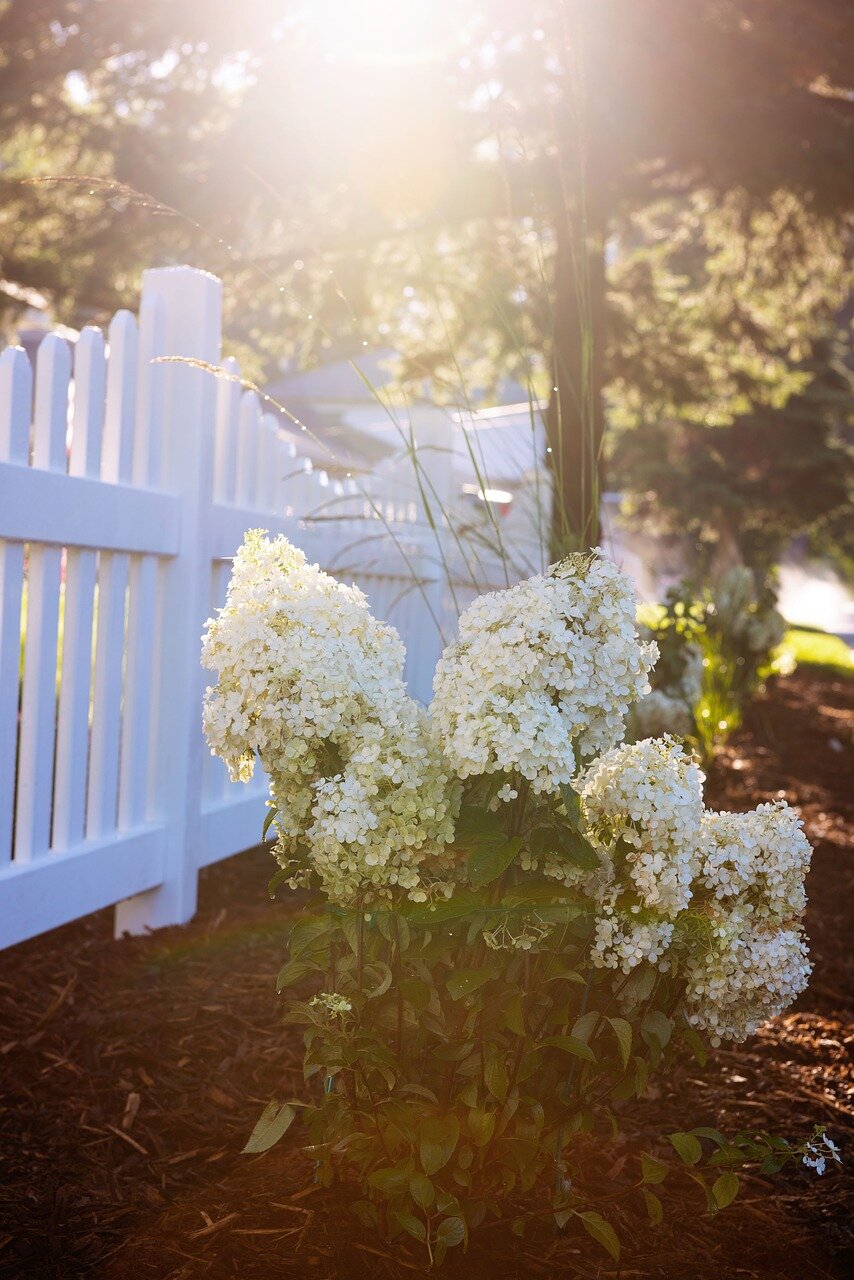Everyone loves a gorgeous green lawn, but if you want to eat, cook and relax outside, it’s worth giving up some grass. This home now has a lovely outdoor living space, thanks to a paver patio installation.
On the Drawing Board
When we work with clients on a paver patio installation, our first step is to evaluate the site. We look at how a patio could be laid out in relation to the house and other outdoor features. The location of trees and shrubs must be taken into account. If a tree is too close to a patio, its roots can shift the pavers over time.
Then, we talk about the clients’ vision for the patio. Its size will depend on the site and how it will be used. If the patio will be the spot for dining, an outdoor kitchen, a fireplace and a sitting area, it should be much larger than one designed for just a small bistro table and chairs. We also talk about other features they would like to include, like built-in firepits, sitting walls, lighting, a pool or hot tub.
The clients choose a paver material for their patio, depending on their preference and the style of their home. There are many options to choose from such as clay paver bricks, concrete pavers or natural stone.
Paver Patio Installation Steps
With the design finalized, we begin by removing existing plants and excavating the site. A layer of paver base material is added and compacted. This material is topped with a weed barrier then a layer of sand, which the pavers will be laid into. This allows the pavers to flex slightly and accommodate the freeze thaw cycle. Making this base compacted and uniform ensures that the pavers will remain in place and the patio will look good for the long haul. Typically, a patio is slightly sloped to allow for water to drain off.
Then the pavers are laid in whatever pattern the client chooses. Paver restraints are used around the perimeter. The last step is to brush a layer of joint sand over the top of the pavers to fill the spaces between them.
If you have questions about landscape design or paver patio installation, we’d love to answer them. We look forward to hearing from you.































